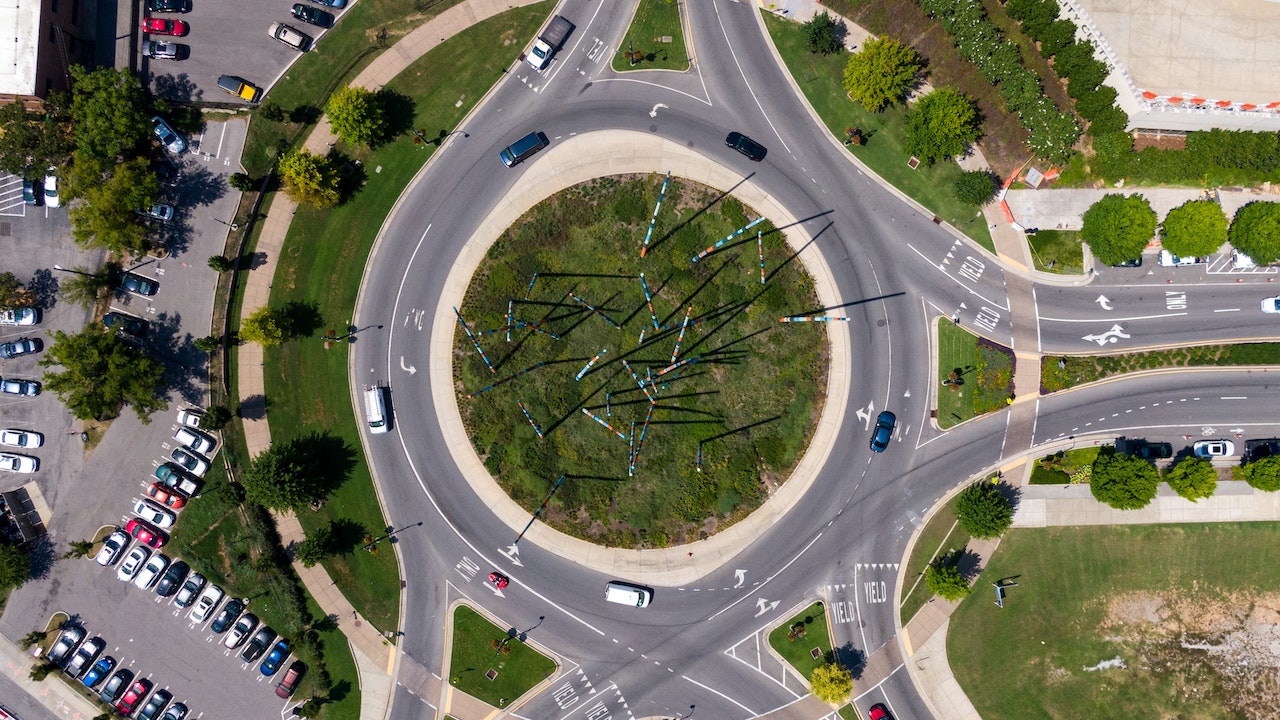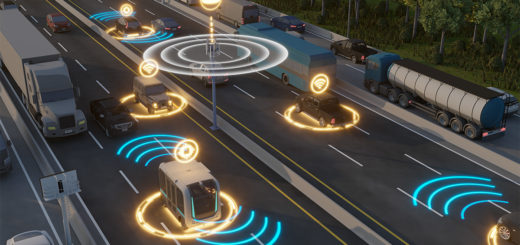Road Intersections: Enhancing Traffic Flow and Safety
Road intersections are vital components of transportation infrastructure that play a crucial role in facilitating the movement of vehicles, pedestrians, and cyclists. They are the points where roads intersect and intersecting traffic streams converge. Efficient and safe intersection design and management are essential for reducing congestion, improving traffic flow, and ensuring the safety of all road users. In this article, we will explore the different types of road intersections, discuss their significance, and delve into effective strategies to optimize their functionality.
What is Road Intersections
Road intersections refer to the points where two or more roads cross paths, allowing vehicles, pedestrians, and cyclists to change their direction of travel. Intersections can vary in complexity, from simple two-way crossings to multi-lane junctions with traffic signals or roundabouts. They serve as crucial nodes in the transportation network, connecting different routes and enabling efficient mobility.
Importance of Efficient Intersection Design
Efficient intersection design is essential for optimizing traffic flow and minimizing congestion. Well-designed intersections help to reduce delays, improve travel times, and enhance overall transportation efficiency. Moreover, they contribute to the safety of road users by minimizing conflicts and providing clear guidance for proper maneuvering.
Common Types of Road Intersections
Four-Way Intersections
Four-way intersections, also known as crossroads, involve the crossing of two perpendicular roads. These intersections often have traffic signals or stop signs to regulate the right-of-way. Proper signal timing and coordination are crucial to ensure smooth traffic flow and minimize conflicts.
T-Intersections
T-intersections occur when one road intersects with another, forming a “T” shape. They are commonly found in urban and suburban areas, where one road terminates or continues as a minor street. T-intersections can be controlled or uncontrolled, depending on the traffic volume and the need for traffic control devices.
Roundabouts
Roundabouts are circular intersections designed to improve traffic flow and reduce the severity of accidents. Vehicles circulate around a central island in a counterclockwise direction, yielding to entering traffic. Roundabouts enhance safety by eliminating the need for traffic signals and reducing the likelihood of high-speed, right-angle collisions.
Signalized Intersections
Signalized intersections utilize traffic signals to control the flow of traffic from different approaches. Traffic lights alternate the right-of-way between conflicting movements, ensuring a fair and orderly progression of vehicles. Signal timing optimization is critical to prevent excessive delays and congestion.
Unsignalized Intersections
Unsignalized intersections lack traffic signals and rely on other traffic control mechanisms such as stop signs, yield signs, or roundabouts. Drivers must exercise caution and yield the right-of-way to other vehicles according to established rules. Unsignalized intersections require careful design considerations to maintain safety and efficient traffic operations.
Factors Influencing Intersection Performance
Efficient intersection performance depends on various factors that impact traffic flow and safety. Understanding these factors is crucial for designing effective intersection solutions. Some key factors include:
Traffic Volume and Capacity
The volume of traffic passing through an intersection significantly affects its capacity and performance. High traffic volumes may lead to congestion and delays, necessitating appropriate traffic management strategies.
Intersection Geometry
The geometry of an intersection, including the number of lanes, turning radii, and lane widths, influences its capacity and safety. Proper alignment and design elements ensure smooth traffic movements and reduce the risk of collisions.
Traffic Control Devices
The presence of traffic control devices, such as signals, signs, or roundabouts, affects the efficiency and safety of intersections. Well-placed and properly functioning devices guide road users and regulate traffic flow.
Pedestrian and Cyclist Considerations
Pedestrians and cyclists are essential road users at intersections, and their needs must be addressed in intersection design. Sidewalks, crosswalks, bike lanes, and appropriate signalization are necessary to ensure their safety and convenience.
Best Practices for Intersection Design
To optimize intersection functionality, several best practices should be considered during the design phase:
Clear Visibility and Sight Lines
Good visibility at intersections is vital for drivers to see approaching vehicles, pedestrians, and cyclists. Clear sight lines should be maintained by considering factors such as vegetation management and proper signage placement.
Adequate Lane Widths and Markings
Providing sufficient lane widths and clear lane markings helps drivers navigate intersections safely. Well-defined lanes reduce confusion and prevent potential conflicts between vehicles.
Signal Timing and Coordination
Accurate signal timing and coordination are critical for efficient traffic flow. Timely changes in signal phases should be synchronized to minimize delays and maximize the progression of vehicles.
Accommodating Pedestrians and Cyclists
Intersection design should prioritize the safety and convenience of pedestrians and cyclists. Dedicated crosswalks, bicycle lanes, and appropriate signage contribute to their accessibility and protection.
Innovative Intersection Solutions
Advancements in transportation engineering have led to the development of innovative intersection solutions aimed at improving efficiency and safety. Some notable examples include:
Diverging Diamond Interchanges
Diverging diamond interchanges (DDIs) are innovative designs that reduce conflicts and improve traffic flow. They involve temporarily crossing over to the opposite side of the road at the interchange, enhancing the efficiency of left-turn movements.
Continuous Flow Intersections
Continuous flow intersections (CFIs) allow left-turning vehicles to bypass oncoming traffic, reducing congestion and delays. By separating conflicting movements, CFIs enhance intersection capacity and improve overall traffic flow.
Smart Intersection Technology
Smart intersection technology utilizes sensors, cameras, and data analytics to optimize traffic signal operations. By dynamically adjusting signal timing based on real-time traffic conditions, smart intersections can improve efficiency and reduce congestion.
Enhancing Safety at Intersections
Safety is a paramount concern at intersections, and various strategies can be employed to reduce the risk of accidents and injuries:
Reducing Conflict Points
Intersection design should aim to minimize conflict points where vehicles, pedestrians, and cyclists may collide. Roundabouts and other geometric modifications can help achieve this objective.
Implementing Safety Countermeasures
Installation of safety countermeasures such as reflective signage, pavement markings, and traffic calming measures can enhance intersection safety. These measures improve visibility, guide road users, and encourage lower vehicle speeds.
Educating Road Users
Raising awareness and educating road users about intersection safety is crucial for reducing accidents. Public campaigns, driver education programs, and pedestrian safety initiatives help promote responsible behavior and increase awareness of potential risks at intersections.
Future Trends and Challenges
As transportation evolves, intersections face new trends and challenges that require innovative solutions:
Autonomous Vehicles and Intersections
The rise of autonomous vehicles presents unique opportunities and challenges at intersections. Advanced sensors and communication systems can enable safe and efficient interactions between autonomous vehicles and traditional vehicles, leading to optimized intersection performance.
Sustainable Intersection Design
Incorporating sustainability principles into intersection design can reduce environmental impacts and promote sustainable transportation. This includes features such as energy-efficient traffic signals, green infrastructure, and provisions for alternative modes of transport.
Balancing Safety and Mobility
Achieving a balance between safety and mobility is an ongoing challenge in intersection design. While safety is a priority, it is essential to implement strategies that minimize delays and congestion without compromising road user safety.
Road intersections are critical components of transportation networks, and their design and management significantly impact traffic flow and safety. By understanding the various types of intersections, factors influencing their performance, and implementing best practices, we can enhance efficiency and safety for all road users. Embracing innovative solutions and addressing future trends and challenges will further optimize intersection functionality in the ever-evolving transportation landscape.




